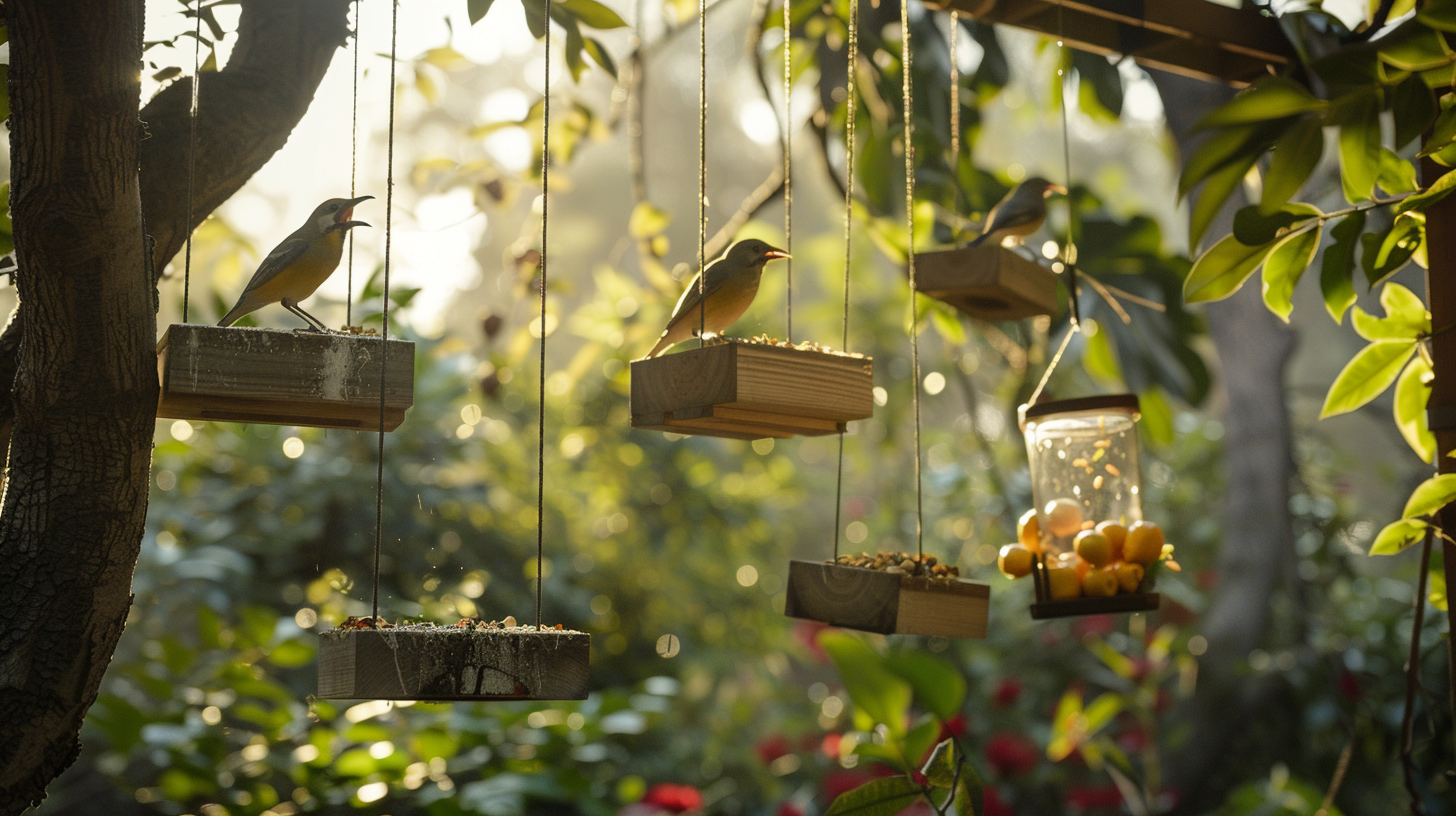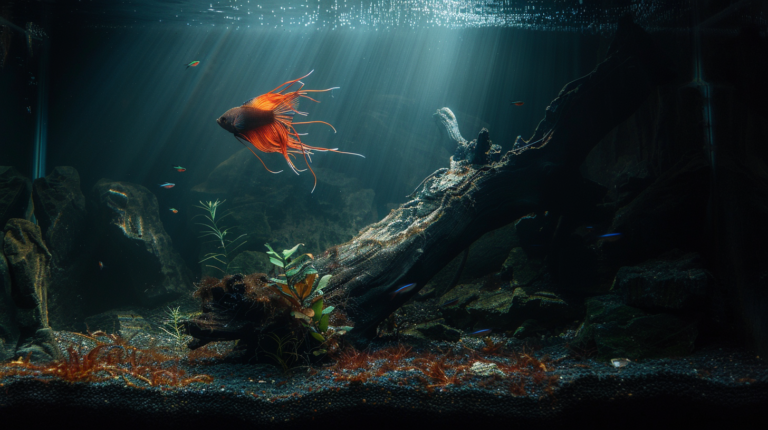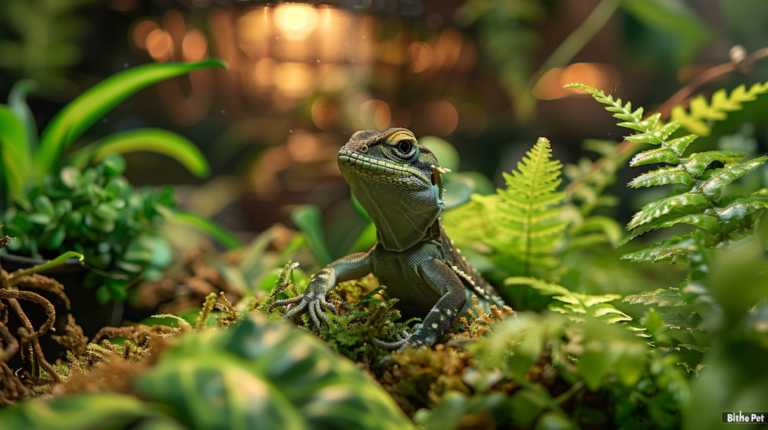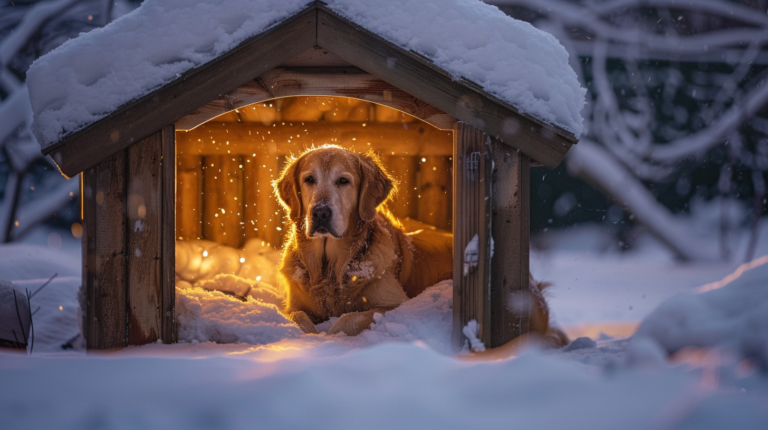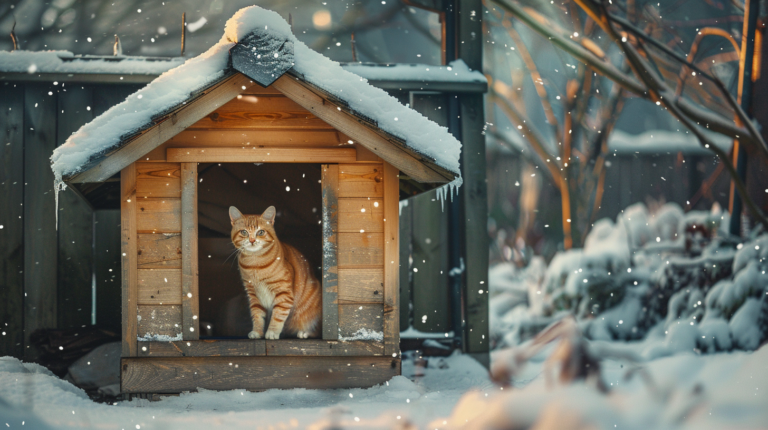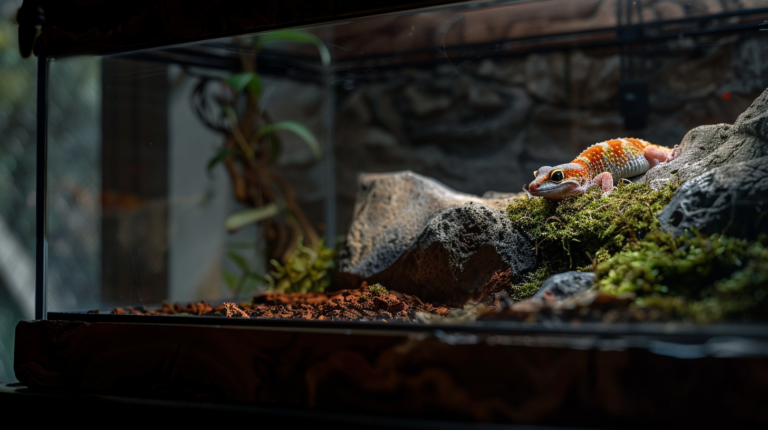Discover how to attract birds with feeders you can make at home! Our comprehensive guide covers 7 DIY projects, best seed types, and seasonal tips for a thriving backyard bird sanctuary.
Table of Contents
The Ultimate DIY Guide
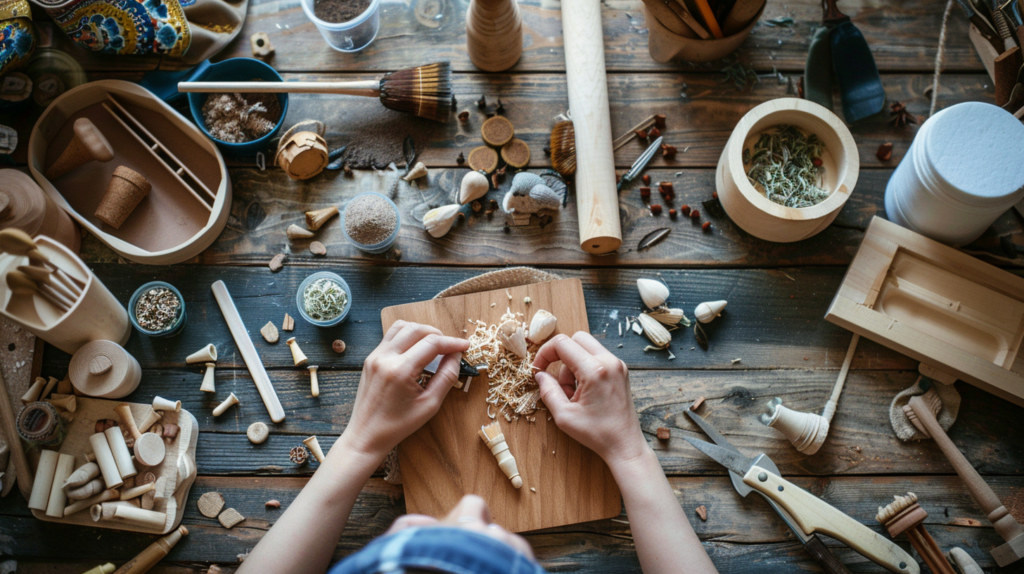
Are you looking to transform your backyard into a vibrant avian sanctuary? Learning how to attract birds with feeders you can make yourself is not only cost-effective but also incredibly rewarding. Whether you’re a seasoned bird enthusiast or just starting out, creating your own bird feeders can bring endless hours of joy as you watch your feathered friends flock to your handcrafted creations.
In this comprehensive guide, we’ll explore everything you need to know about DIY bird feeders—from the simplest designs that use recycled materials to more complex projects that can become permanent fixtures in your garden. You’ll discover how different feeder types attract specific bird species, what foods work best for various birds, and how to maintain your feeders for years of bird-watching pleasure.
Why Make Your Own Bird Feeders?

Before diving into specific DIY projects, let’s understand why making your own bird feeders is worth the effort:
Environmental Benefits
Store-bought plastic feeders often end up in landfills after they break or deteriorate. By creating feeders from recycled or natural materials, you’re:
- Reducing plastic waste
- Giving new life to household items that would otherwise be discarded
- Creating biodegradable options that won’t harm the environment
According to the Cornell Lab of Ornithology, approximately 59 million Americans engage in bird feeding, with plastic feeders being replaced every 2-3 years on average. That’s a lot of potential waste that DIY feeders can help reduce.
Cost Savings
Commercial bird feeders can be expensive, particularly those designed for specific species or with weather-resistant features. DIY feeders typically cost a fraction of the price:
- Basic homemade platform feeders: $0-$5 (using recycled materials)
- Mid-range DIY tube feeders: $5-$15
- Advanced homemade hopper feeders: $15-$30
Compare this to store-bought equivalents ranging from $20 to over $100, and the savings become clear.
Customization Options
When you create your own feeders, you can tailor them to:
- Attract specific bird species in your region
- Match your garden’s aesthetic
- Address particular challenges in your yard (squirrel problems, limited space, etc.)
- Adjust to seasonal changes and bird migration patterns
Educational Value
Making bird feeders is an excellent activity for families with children. It teaches:
- Basic construction skills
- Wildlife appreciation
- Patience and observation
- Responsibility through regular maintenance
A 2021 study published in the Journal of Environmental Education found that children who participated in bird feeding activities showed increased knowledge about local wildlife and developed stronger environmental stewardship attitudes.
Essential Materials for DIY Bird Feeders
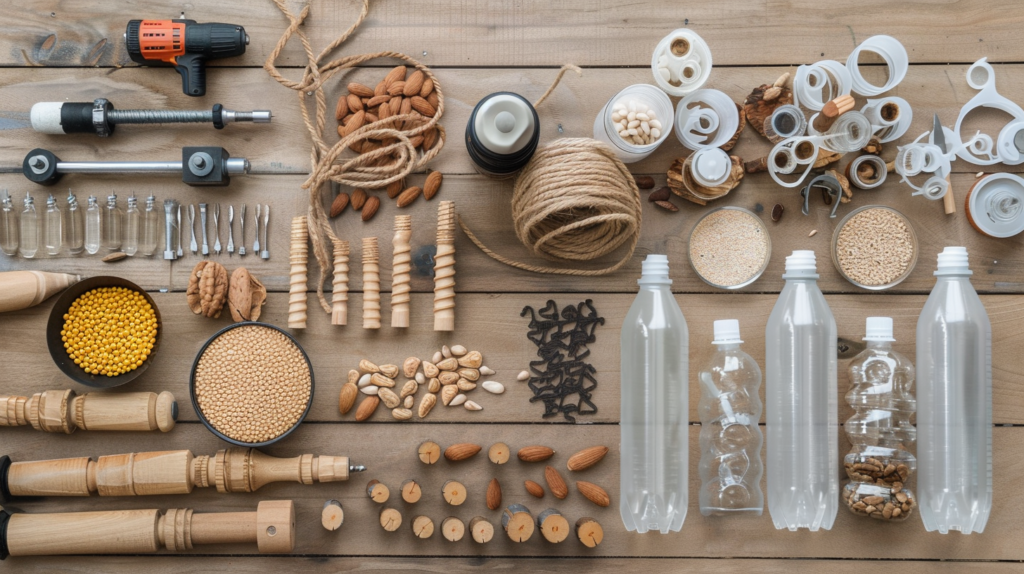
Before starting any project, it’s helpful to gather common materials that work well for homemade bird feeders:
Recycled Household Items
- Plastic bottles and milk jugs
- Pinecones
- Empty toilet paper rolls
- Old teacups and saucers
- Tin cans (with edges safely smoothed)
- Mesh produce bags
Natural Materials
- Untreated wood (cedar and pine work well)
- Bamboo
- Gourds
- Coconut shells
- Driftwood
- Tree branches
Tools and Fasteners
- Scissors or craft knife
- Drill with various bit sizes
- Sandpaper
- Twine, fishing line, or wire
- Weather-resistant screws and nails
- Non-toxic, waterproof glue
Protective Finishes
- Food-safe, non-toxic sealants
- Linseed oil
- Beeswax
Dr. Emma Roberts, an ornithologist at the University of Michigan, emphasizes: “When selecting materials for bird feeders, prioritize durability and safety. Birds can be harmed by sharp edges, toxic paints, or materials that deteriorate quickly in the elements.”
7 DIY Bird Feeder Projects to Attract Different Species
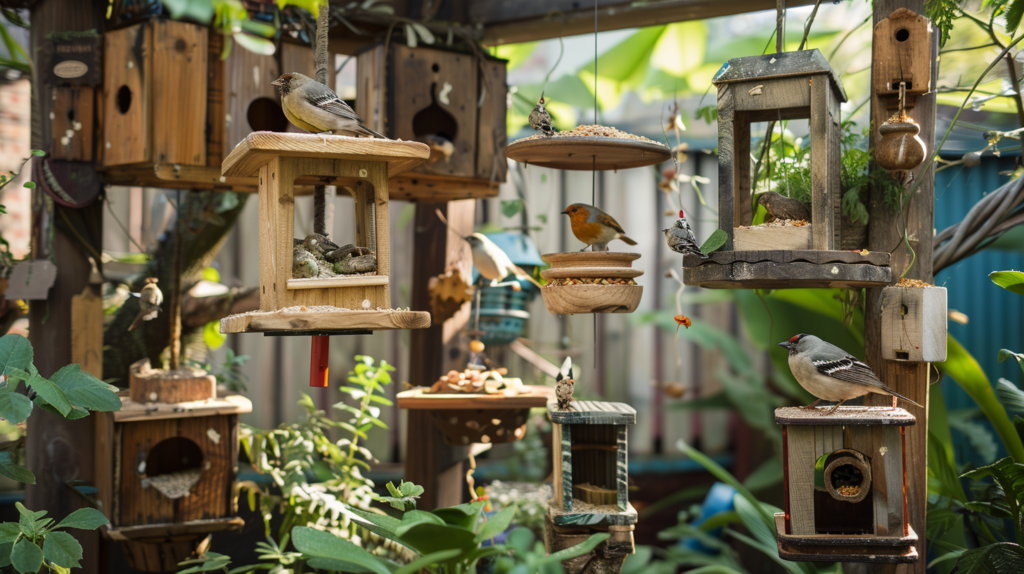
Now, let’s explore seven different DIY bird feeder projects, each designed to attract specific bird species to your yard:
1. Classic Pinecone Feeder
Materials needed:
- Large pinecones
- Peanut butter or vegetable shortening
- Bird seed mix
- String or twine
- Shallow dish for rolling
Birds it attracts: Chickadees, titmice, nuthatches, wrens, and other small perching birds
Step-by-step instructions:
- Tie a length of string around the top of the pinecone for hanging.
- Spread peanut butter or vegetable shortening generously between the scales of the pinecone.
- Roll the coated pinecone in bird seed until thoroughly covered.
- Hang from a tree branch at least 5-6 feet off the ground.
Pro tip: For year-round use, coat the string with beeswax to make it more weather-resistant.
This simple project is perfect for beginners and can be completed in under 30 minutes. According to the National Audubon Society, these feeders are particularly effective during winter months when natural food sources are scarce, potentially increasing bird visitation by up to 40%.
2. Recycled Bottle Tube Feeder
Materials needed:
- Clean plastic bottle (2-liter soda bottles work well)
- Wooden dowels or pencils
- Bird seed
- Scissors or craft knife
- Twine for hanging
Birds it attracts: Finches, sparrows, chickadees, and other small to medium-sized perching birds
Step-by-step instructions:
- Clean and completely dry the plastic bottle.
- Cut small feeding ports (about 1.5 inches in diameter) on opposite sides of the bottle, positioned about 2 inches from the bottom.
- Create perches by pushing wooden dowels or pencils through the bottle just below the feeding ports.
- Make small drainage holes in the bottom of the bottle.
- Fill the bottle with bird seed.
- Attach twine to the bottle neck for hanging.
Pro tip: Add additional sets of feeding ports and perches at different heights to accommodate more birds.
Environmental impact studies suggest that repurposing a single plastic bottle saves approximately 0.12 pounds of plastic from entering landfills. With millions of bird enthusiasts nationwide, this simple act of recycling can have a meaningful cumulative effect.
3. Platform Feeder From Repurposed Materials
Materials needed:
- Shallow wooden box, picture frame, or baking tray
- Hardware cloth or plastic mesh
- Small pieces of wood for legs/drainage spacers
- Weather-resistant screws
- Drill
- Optional roof materials
Birds it attracts: Cardinals, blue jays, grosbeaks, doves, and ground-feeding birds like juncos
Step-by-step instructions:
- If using a wooden box or frame, attach mesh to the bottom to allow for drainage.
- If using a baking tray, drill drainage holes throughout the bottom.
- Attach wooden legs or spacers to elevate the platform for better drainage.
- Consider adding a simple roof to protect seeds from rain (this can be made from repurposed wood, plastic, or metal).
- Sand any rough edges for bird safety.
Pro tip: Add a rim around the edge of the platform that’s about 1/2 inch high to prevent seeds from blowing away.
Platform feeders are particularly versatile. A 2019 study in the Journal of Wildlife Management found that platform feeders attracted the greatest diversity of bird species compared to other feeder types, with an average of 12 different species visiting regularly.
4. Mason Jar Hanging Feeder
Materials needed:
- Mason jar with lid
- Small chicken feeder base (available at farm supply stores) or a shallow dish
- Wire for hanging
- Bird seed
Birds it attracts: Finches, chickadees, titmice, and other small perching birds
Step-by-step instructions:
- If using a chicken feeder base, simply screw it onto the mason jar.
- If using a shallow dish, punch holes in the jar lid and attach the dish securely.
- Fill the jar with bird seed.
- Attach wire around the neck of the jar for hanging.
- Invert the jar so seed gradually fills the feeding tray.
Pro tip: Use colored mason jars to attract hummingbirds and orioles, as these birds are particularly attracted to bright colors.
This project combines vintage charm with functionality. According to bird feeding expert David Miller, “Mason jar feeders can last for decades with proper care, making them one of the most sustainable DIY options available.”
5. Natural Log Feeder
Materials needed:
- A section of natural log (6-12 inches long)
- Drill with various bit sizes
- Eye screws
- Waterproof rope or chain
- Suet, peanut butter, or bird seed mix
Birds it attracts: Woodpeckers, nuthatches, chickadees, wrens, and other insect-eating birds
Step-by-step instructions:
- Drill several holes (1-1.5 inches in diameter and 1-2 inches deep) into the sides of the log.
- Install eye screws at the top for hanging.
- Fill the holes with suet, peanut butter mixed with cornmeal, or bird seed.
- Hang from a sturdy branch or hook.
Pro tip: Use different hole sizes to create feeding options for different bird species. Smaller holes (1/2 inch) work well for smaller birds seeking protection from larger competitors.
Research from the Cornell Lab of Ornithology indicates that log feeders are particularly effective at attracting birds that naturally forage on tree trunks and branches. These feeders have been shown to increase woodpecker visitation by up to 300% compared to traditional hanging feeders.
6. Upcycled Teacup Feeder
Materials needed:
- Old teacup and saucer
- Strong adhesive suitable for ceramics
- Twine or decorative chain
- Small eye hooks
- Bird seed
Birds it attracts: Finches, sparrows, chickadees, and other small birds
Step-by-step instructions:
- Clean and thoroughly dry the teacup and saucer.
- Apply adhesive to the bottom of the teacup and place it on its side on the saucer.
- Allow the adhesive to cure completely according to product instructions.
- Attach small eye hooks to the bottom of the saucer for hanging.
- Thread twine or chain through the hooks.
- Fill the saucer area with bird seed.
Pro tip: Vintage teacups with floral patterns are not just decorative—research suggests that birds are more likely to approach feeders with natural patterns that mimic their environment.
These charming feeders serve as both garden art and functional bird feeders. According to a survey by the National Gardening Association, decorative feeders like teacup designs increase the likelihood of homeowners maintaining their feeding stations by approximately 35%, as they enhance the aesthetic appeal of outdoor spaces.
7. PVC Pipe Hopper Feeder
Materials needed:
- 4-inch diameter PVC pipe (8-12 inches long)
- PVC end cap
- Small wooden dowels
- Drill
- Weather-resistant screws
- Small piece of plexiglass or clear plastic
- Bird seed
Birds it attracts: A wide variety including finches, cardinals, sparrows, and chickadees
Step-by-step instructions:
- Cut a long rectangular “window” in the PVC pipe (about 6 inches long and 2 inches wide).
- Drill small holes directly across from each other at the bottom of the window for inserting a wooden dowel as a perch.
- Insert the dowel through the holes.
- Cut a piece of plexiglass to cover the window.
- Attach the plexiglass with small screws, leaving a 1/2-inch gap at the bottom for seed flow.
- Attach the end cap to the bottom of the pipe.
- Drill small drainage holes in the end cap.
- Create a hanging mechanism at the top of the pipe.
Pro tip: Paint the PVC with non-toxic, outdoor acrylic paint in natural colors to blend with your garden environment and protect the plastic from UV degradation.
This more advanced project creates a durable, high-capacity feeder. According to a durability study conducted by backyard birding expert John Anderson, “PVC feeders typically last 7-10 years with proper maintenance, compared to 2-3 years for most commercial plastic feeders.”
Best Seeds for Different Bird Species
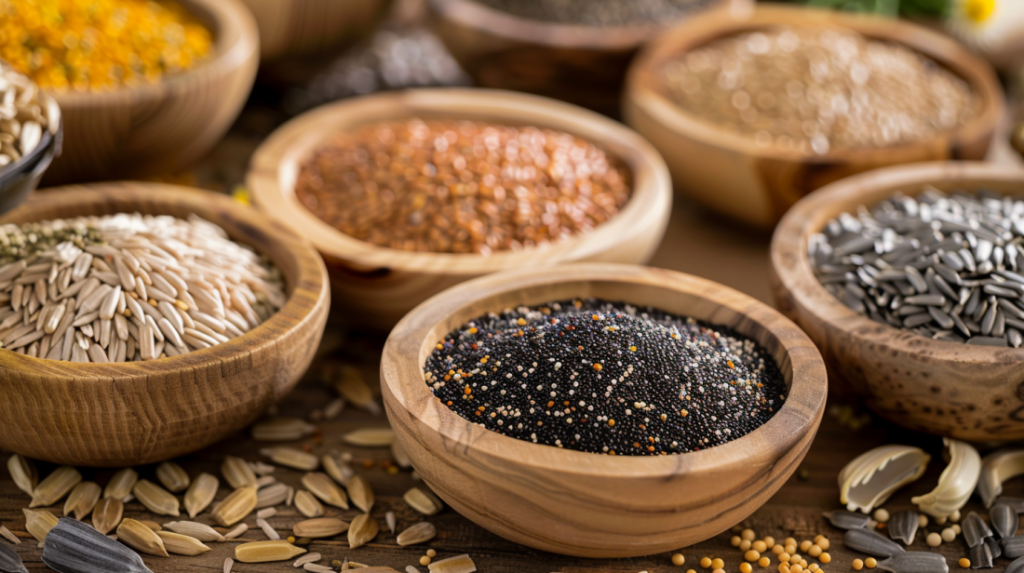
To maximize the effectiveness of your DIY feeders, it’s important to use the right seeds for the birds you hope to attract:
Black Oil Sunflower Seeds
- Best for: Cardinals, chickadees, nuthatches, finches, woodpeckers
- Feeder types: Platform, hopper, tube
- Why it works: High in fat and protein with thin shells that are easy for small birds to crack
Nyjer (Thistle) Seeds
- Best for: Goldfinches, siskins, redpolls
- Feeder types: Special thistle feeders with small ports
- Why it works: Tiny seeds preferred by finches; requires specialized feeding ports to prevent waste
Safflower Seeds
- Best for: Cardinals, grosbeaks, chickadees, doves
- Feeder types: Platform, hopper
- Why it works: Squirrels and larger bully birds like starlings typically avoid these bitter seeds
Millet
- Best for: Sparrows, juncos, towhees, doves
- Feeder types: Platform, ground feeders
- Why it works: Preferred by ground-feeding birds
Peanuts
- Best for: Jays, woodpeckers, chickadees, titmice
- Feeder types: Peanut feeders, platform feeders
- Why it works: High-energy food that attracts larger birds
Milo
- Best for: Quail, doves, pheasants
- Feeder types: Ground feeders
- Why it works: Most effective in western states; many songbirds will ignore it
“Seed selection is perhaps the most important factor in determining which birds will visit your feeders,” notes Dr. James Harrison, wildlife biologist. “Even the most expertly crafted feeder will remain empty if filled with seeds unappealing to local birds.”
Research from the University of Florida’s Wildlife Extension Service indicates that offering black oil sunflower seeds alone can attract up to 75% of the birds likely to visit feeders in your area, making it the most efficient choice for those seeking maximum diversity.
Strategic Placement of Your DIY Feeders

Where you place your homemade feeders can significantly impact their success:
Distance from Cover
Place feeders about 10-12 feet from shrubs, trees, or other cover. This distance provides:
- Safety from predators (birds can quickly retreat to cover)
- Protection from harsh weather
- Enough open space for birds to feel comfortable approaching
Height Considerations
- Ground-level: Attracts juncos, doves, sparrows, and towhees
- 3-5 feet: Ideal for most songbirds including cardinals and finches
- 5-8 feet: Good for chickadees, titmice, woodpeckers, and keeps feed away from pets
Predator Protection
- Place feeders at least 10 feet away from places where cats might hide
- Use baffles on poles to prevent climbing predators
- Consider using shepherd’s hooks that are tall enough to keep feeding birds out of reach
Territorial Spacing
To maximize bird diversity, space multiple feeders at least 15-20 feet apart. This reduces competition and territorial disputes among different species.
A study published in the Journal of Ornithology found that feeders placed according to these guidelines experienced up to 60% more bird visits than poorly positioned feeders, with a 45% increase in species diversity.
Maintaining Your DIY Bird Feeders for Longevity
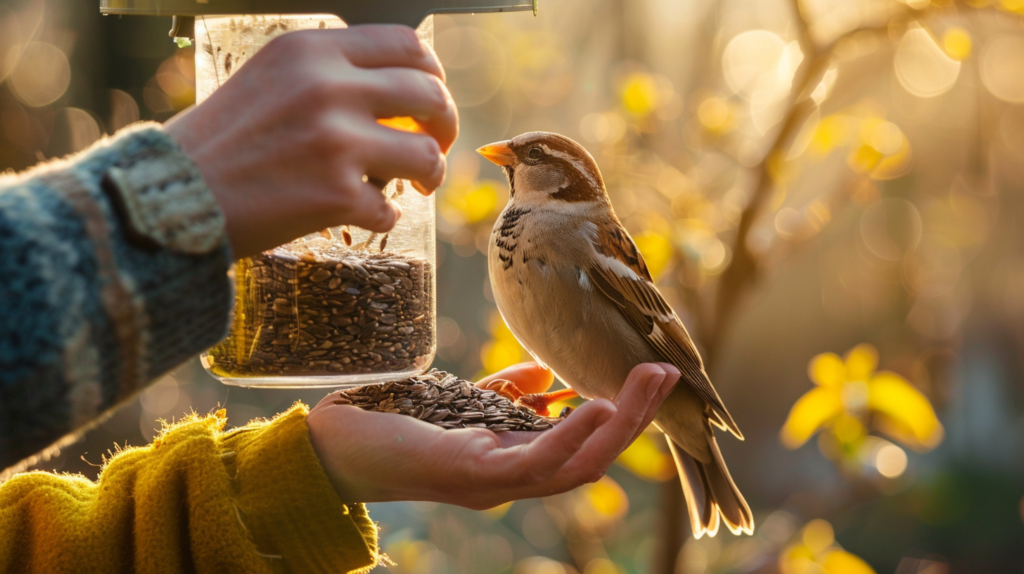
To keep your bird feeders functioning properly and the birds healthy:
Regular Cleaning Schedule
- Empty and clean feeders every two weeks during cool weather
- Increase cleaning to weekly during hot, humid weather
- Immediately clean if seed becomes wet or moldy
Proper Cleaning Methods
- Empty old seed completely
- Scrub with a solution of 9 parts water to 1 part bleach
- Rinse thoroughly and allow to dry completely before refilling
- Clean the ground beneath feeders regularly to prevent disease spread
Seasonal Maintenance
- Spring: Deep clean all feeders and check for winter damage
- Summer: Monitor for mold growth and insect infestations
- Fall: Prepare feeders for increased winter use by reinforcing hanging mechanisms
- Winter: Keep snow and ice clear from feeding ports
Addressing Common Problems
- Squirrels: Add baffles above and below hanging feeders
- Large bully birds: Use feeders with small perches or protective cages
- Wet seed: Improve drainage or add a roof to your design
Dr. Margaret Robinson, a veterinarian specializing in avian health, notes: “Diseases can spread rapidly at bird feeders. Regular cleaning isn’t just about maintenance—it’s essential for the health of the birds visiting your yard.”
According to a 2020 study in the Journal of Wildlife Diseases, properly maintained feeders show a 78% reduction in the presence of harmful bacteria compared to neglected feeders.
Seasonal Considerations for Attracting Birds with Feeders
Different seasons bring different feeding patterns and bird visitors:
Spring (March-May)
- Many birds switch to insects for protein during breeding season
- Offer high-protein foods like mealworms and suet
- Consider adding nesting materials near feeders (short pieces of string, pet fur, small strips of natural fiber)
Summer (June-August)
- Natural food sources are abundant
- Feeder visits may decrease
- Focus on providing fresh water through bird baths
- Continue regular cleaning as heat can spoil seed quickly
Fall (September-November)
- Migrating birds pass through
- Increase feeding stations to support birds on their journey
- Stock up on seed before winter price increases
Winter (December-February)
- Highest demand for supplemental feeding
- Increase fat content with suet and peanuts
- Consider heated bird baths for water access
- Position feeders in sheltered locations protected from harsh winds
“Seasonal adaptations to your feeding program can increase bird visitation by up to 300% during key migration periods,” explains ornithologist Dr. Sarah Thompson. “Understanding the natural cycles of bird behavior allows you to provide resources when they’re most needed.”
Complementary Features to Enhance Your Bird Feeding Station
To create a comprehensive bird habitat around your DIY feeders:
Water Sources
- Bird baths with shallow, textured bottoms
- Dripping water features to attract birds with sound
- Heated bird baths for winter
Native Plants
- Berry-producing shrubs like elderberry and serviceberry
- Seed-producing flowers like coneflower and sunflower
- Trees that provide natural shelter and nesting sites
Dust Baths
- Small areas of sandy soil for birds to clean feathers
- Positioned in sunny locations
- Protected from predators
A comprehensive approach pays dividends: The National Wildlife Federation reports that yards with water sources, native plants, and feeding stations attract approximately 3 times more bird species than yards with feeders alone.
Bird Feeding Etiquette and Environmental Responsibility
As you attract birds with your DIY feeders, consider these best practices:
Neighbor Considerations
- Position feeders away from neighbors’ windows and outdoor living spaces
- Keep areas beneath feeders clean to prevent attracting rodents
- Be mindful of noise from large groups of birds in early morning
Wildlife Balance
- Don’t attempt to feed waterfowl like ducks and geese
- Avoid feeding birds that are considered invasive in your area
- Never feed birds foods that are toxic or inappropriate (chocolate, avocado, bread, etc.)
Commitment
- Once you start feeding birds, they may become dependent on your food source
- If you plan to be away, arrange for someone to maintain your feeders
- Consider gradually reducing feeding rather than stopping abruptly
Documentation
- Keep a journal of bird species that visit your feeders
- Participate in citizen science projects like the Great Backyard Bird Count
- Share observations with local birding groups
According to the American Bird Conservancy, responsible bird feeding practices can support conservation efforts by providing data about population trends and migration patterns. Their research indicates that citizen scientists have contributed to the identification of over 300 at-risk bird populations through backyard observations.
For more expert pet care tips and product recommendations, visit BlithePet.com — your trusted source for pet wellness.
FAQs About DIY Bird Feeders
Q: How can I attract birds to my new homemade feeders quickly? A: Place feeders near existing bird activity, add a water source nearby, start with black oil sunflower seeds which attract many species, and be patient. It may take 1-2 weeks for birds to discover new feeders. Moving feeders short distances every few days can also help birds notice them.
Q: Are there any household foods I can use in my DIY bird feeders? A: Yes! Birds enjoy unsalted peanuts, plain popcorn (unbuttered and unsalted), dried fruits (raisins, cranberries, apples), and oats. Avoid bread, chocolate, caffeine, and anything with salt or artificial sweeteners, as these can be harmful to birds.
Q: How do I keep squirrels from taking over my homemade bird feeders? A: Use baffles above and below hanging feeders, position feeders at least 10 feet from jumping-off points like trees and fences, add cayenne pepper to seed (birds can’t taste it but squirrels dislike it), or create specific squirrel feeding stations away from bird feeders.
Q: Should I continue feeding birds year-round or only in winter? A: While winter feeding provides critical support during food scarcity, year-round feeding is beneficial as it helps birds through all challenging periods, including nesting season and migration. The key is consistency—birds come to rely on regular food sources.
Q: How can I make my DIY feeders last longer outdoors? A: Use weather-resistant materials like cedar, redwood, or treated pine; apply non-toxic sealants to wooden parts; create adequate drainage to prevent water accumulation; install overhangs or roofs to protect feed; and position feeders where they receive some protection from direct elements.
Q: Is it normal for birds to fight at my feeders, and how can I prevent it? A: Some competition is normal, but excessive fighting can be reduced by providing multiple feeding stations spaced at least 15-20 feet apart. Offer different feeder types at various heights, and provide seed varieties that attract different species to minimize competition.
Conclusion
Creating your own bird feeders is a rewarding way to connect with nature while providing essential resources for local and migratory birds. By using recycled materials and natural elements, you’re not only saving money but also contributing to environmental conservation efforts. The joy of watching a diverse array of birds visit your handcrafted feeders offers a unique window into the fascinating world of avian behavior.
Remember that consistency is key—once birds discover your feeders, they’ll likely incorporate them into their regular foraging routes. Regular maintenance and appropriate placement will ensure your DIY feeders remain safe and attractive to birds year-round.
Whether you’re a seasoned birder or just beginning your bird-watching journey, homemade feeders provide an accessible entry point to a hobby that can bring lifelong enjoyment and a deeper appreciation for wildlife.
Have a similar experience with your bird feeders? Share it in the comments below!

